What is the Environmental Impact of Air Pollution?
Air pollution is not just a hazy inconvenience on a summer day; it is a profound and pervasive issue that ripples through our entire environment. Imagine standing in a beautiful forest, surrounded by vibrant greenery, only to realize that the air you breathe is laden with harmful pollutants. This reality is what millions of people face daily. Air pollution affects our ecosystems, human health, and even the climate, creating a web of challenges that require urgent attention. Understanding these impacts is crucial for developing effective solutions that can protect our planet and our health.
Air pollution disrupts ecosystems by altering soil and water quality, which in turn affects plant and animal life. For instance, when harmful substances like nitrogen oxides and sulfur dioxide are released into the atmosphere, they can fall back to the earth in the form of acid rain. This acid rain can significantly alter soil chemistry, making it difficult for plants to thrive. As plants struggle, the animals that depend on them for food and habitat also suffer. The cascading effects can lead to biodiversity loss and ecosystem degradation, ultimately impacting the overall health of our environment. It’s like a domino effect; when one piece falls, the rest follow.
The health consequences of air pollution are severe and far-reaching. Polluted air is a silent killer, contributing to respiratory issues, cardiovascular diseases, and even premature deaths. Did you know that according to the World Health Organization, air pollution is responsible for millions of deaths each year? Understanding these impacts is vital for public health and safety measures. It’s not just about the air we breathe; it’s about the lives we lead. The connection between air quality and health is undeniable, and it’s a conversation we must engage in.
Exposure to polluted air can lead to chronic respiratory diseases such as asthma and chronic obstructive pulmonary disease (COPD). These conditions don’t just affect individuals; they also burden healthcare systems with rising costs. Imagine a child struggling to breathe during a simple game of tag because the air around them is filled with pollutants. This is the reality for many, and it significantly affects their quality of life. The more we understand these connections, the better equipped we are to advocate for cleaner air.
Children are particularly vulnerable to air pollution, facing higher risks of developing respiratory issues and cognitive impairments. Their lungs are still developing, and exposure to harmful pollutants can have lasting effects. Protecting their health is essential for future generations. We must ask ourselves: what kind of world do we want to leave for our children? Ensuring they grow up in a clean environment is not just a responsibility; it’s an obligation.
Long-term exposure to air pollution can result in serious health complications, including lung cancer and heart disease. Awareness of these risks can drive community health initiatives. It’s not just about immediate effects; it’s about the long-term implications that can haunt individuals and families for years. By raising awareness and encouraging preventive measures, we can combat these health risks effectively.
Air pollution is linked to increased rates of heart attacks and strokes. Understanding this connection can help in creating targeted health interventions and policies. The heart is a vital organ, and when the air we breathe is filled with toxins, it can lead to dire consequences. By prioritizing clean air initiatives, we can significantly reduce these risks and promote better health outcomes for everyone.
Air pollution contributes to climate change by releasing greenhouse gases and particulate matter into the atmosphere. These pollutants exacerbate global warming and disrupt weather patterns. It’s like adding fuel to a fire; the more pollutants we emit, the worse the situation becomes. Understanding the relationship between air pollution and climate change is crucial for developing strategies to combat both issues effectively.
Certain air pollutants, such as carbon dioxide and methane, are significant greenhouse gases. Their reduction is crucial for mitigating climate change and protecting the environment. We must recognize that every little action counts. Whether it’s reducing car emissions or supporting renewable energy sources, we can all play a part in this fight.
Air pollution can alter local weather patterns, leading to extreme weather events. Understanding these changes is vital for disaster preparedness and environmental planning. When we see an increase in natural disasters, it’s not just bad luck; it’s often a consequence of our actions. By being proactive, we can mitigate these effects and protect our communities.
Effective regulations are essential to combat air pollution and its environmental impacts. This section discusses existing laws and potential improvements for better air quality. Governments around the world are beginning to recognize the importance of clean air, but there is still much work to be done. It’s not just about creating laws; it’s about enforcing them and ensuring compliance.
Global cooperation through international agreements is crucial for addressing air pollution. These initiatives aim to set standards and reduce emissions worldwide. It’s a collective effort; no single country can solve this problem alone. By working together, we can create a cleaner, healthier world.
Local governments play a critical role in implementing policies to reduce air pollution. This includes promoting clean energy sources and enhancing public transportation systems. It’s about making sustainable choices accessible to everyone. When communities prioritize clean air initiatives, they foster a healthier environment for all residents.
- What are the main causes of air pollution? Air pollution is caused by a variety of sources, including vehicle emissions, industrial discharges, and agricultural activities.
- How can individuals help reduce air pollution? Individuals can reduce air pollution by using public transport, carpooling, reducing energy consumption, and supporting clean energy initiatives.
- What are the health effects of air pollution? Air pollution can lead to respiratory diseases, cardiovascular issues, and can even affect cognitive functions, particularly in children.
- How does air pollution affect climate change? Air pollution contributes to climate change by releasing greenhouse gases that trap heat in the atmosphere, leading to global warming.

Effects on Ecosystems
Air pollution is not just a problem for humans; it has a profound impact on our ecosystems as well. When pollutants are released into the atmosphere, they eventually settle on the ground and in water bodies, altering the natural balance of these environments. The pollutants can seep into the soil, affecting its quality and composition, which in turn impacts the plants that grow in that soil. For instance, heavy metals and chemicals can accumulate in the ground, making it difficult for plants to thrive. This disruption can lead to a decrease in biodiversity, as some species may struggle to survive in these altered conditions.
Moreover, air pollution can significantly affect water quality. When acid rain occurs, which is a direct result of air pollutants like sulfur dioxide and nitrogen oxides, it can lead to the acidification of lakes and rivers. This change in pH can be detrimental to aquatic life, leading to a decline in fish populations and other organisms that are sensitive to changes in their environment. The ripple effect of this is immense; as fish populations dwindle, the animals that rely on them for food, including birds and mammals, also suffer.
In addition to these direct effects, air pollution can also disrupt the intricate relationships within ecosystems. For example, pollinators such as bees and butterflies are adversely affected by polluted air, which can lead to a decline in plant reproduction. Without these essential pollinators, many plants may fail to produce fruit and seeds, leading to further declines in plant diversity. The loss of plant species can have cascading effects throughout the ecosystem, as many animals depend on specific plants for food and habitat.
To illustrate the interconnectedness of these issues, here is a table showing some key pollutants and their effects on various aspects of ecosystems:
| Pollutant | Effect on Soil | Effect on Water | Effect on Biodiversity |
|---|---|---|---|
| Sulfur Dioxide (SO2) | Acidification, nutrient leaching | Acid rain, reduced aquatic life | Decline in sensitive species |
| Nitrogen Oxides (NOx) | Soil nutrient imbalance | Eutrophication, algal blooms | Loss of aquatic species |
| Heavy Metals (e.g., Lead, Mercury) | Toxicity to plants and microorganisms | Bioaccumulation in aquatic organisms | Decline in predator species |
In summary, the effects of air pollution on ecosystems are far-reaching and complex. It’s crucial to recognize that when we harm the air, we are also harming the intricate web of life that depends on clean air, soil, and water. The degradation of ecosystems not only affects wildlife but also impacts human societies that rely on these natural resources for their livelihoods. As stewards of the planet, it is our responsibility to address air pollution and protect the delicate balance of our ecosystems.
- What are the main sources of air pollution? The primary sources include industrial emissions, vehicle exhaust, agricultural activities, and residential heating.
- How does air pollution affect wildlife? Air pollution can lead to habitat destruction, reduced food availability, and increased mortality rates among wildlife.
- What can individuals do to reduce air pollution? Individuals can reduce air pollution by using public transportation, conserving energy, and supporting clean air initiatives.
- Are there any regulations in place to combat air pollution? Yes, many countries have regulations that limit emissions from industries and vehicles, and there are international agreements aimed at reducing air pollution globally.

Impact on Human Health
Air pollution is not just an environmental concern; it directly affects our health in profound ways. Imagine stepping outside and taking a deep breath, only to inhale a cocktail of harmful chemicals and particulates. This reality is all too common in many urban areas, where the air quality can plummet due to industrial emissions, vehicular exhaust, and other pollutants. The consequences of this exposure can be severe, leading to a myriad of health issues that can disrupt daily life and burden healthcare systems.
The most immediate and alarming effects of air pollution manifest in our respiratory systems. Chronic respiratory diseases, such as asthma and chronic obstructive pulmonary disease (COPD), are increasingly prevalent due to poor air quality. According to the World Health Organization, millions of people suffer from these conditions, which not only diminish quality of life but also result in significant healthcare costs. In fact, it's estimated that respiratory diseases linked to air pollution contribute to over 4 million premature deaths each year globally. This staggering statistic underscores the urgency of addressing air quality as a public health crisis.
When we breathe in polluted air, our lungs are forced to work harder, leading to inflammation and long-term damage. Conditions like asthma can be exacerbated by exposure to pollutants, making it difficult for individuals to engage in physical activities or even perform daily tasks. For many, this can feel like trying to run a marathon with a weight on their chest. The struggle is real, and it highlights the need for cleaner air to ensure that everyone can breathe freely.
Children are particularly vulnerable to the effects of air pollution. Their developing lungs and immune systems mean that they face higher risks of developing respiratory issues and cognitive impairments. A child exposed to high levels of air pollution may experience learning difficulties, reduced IQ, and even behavioral problems. Protecting our children from these dangers is not just a parental duty; it’s a societal responsibility. We must advocate for cleaner air policies that safeguard their health and future.
Long-term exposure to air pollution is linked to serious health complications, including lung cancer and heart disease. The cumulative effects of inhaling toxic substances can lead to chronic health conditions that may not surface until years later. This delay in the onset of symptoms can create a false sense of security, leading many to underestimate the risks associated with poor air quality. Awareness of these risks can drive community health initiatives and encourage individuals to take proactive steps in advocating for cleaner air.
Moreover, air pollution is not just a respiratory issue; it has significant cardiovascular implications as well. Research has shown that pollutants can enter the bloodstream and contribute to increased rates of heart attacks and strokes. It's akin to having a silent assassin lurking in the air around us, ready to strike when we least expect it. Understanding this connection is crucial for creating targeted health interventions and policies that can mitigate these risks. For instance, individuals with pre-existing heart conditions should be particularly cautious during high pollution days, as their risk of complications can skyrocket.
In summary, the impact of air pollution on human health is a multifaceted issue that requires immediate attention. From respiratory diseases to cardiovascular impacts, the consequences are severe and far-reaching. It’s essential for individuals, communities, and governments to work together to combat this public health crisis. By raising awareness and implementing effective policies, we can strive for a healthier future where clean air is a reality for everyone.
- What are the main sources of air pollution? Common sources include vehicle emissions, industrial discharges, and agricultural activities.
- How can I protect myself from air pollution? Staying indoors on high pollution days, using air purifiers, and wearing masks can help reduce exposure.
- What can governments do to combat air pollution? Governments can implement stricter emissions regulations, promote public transportation, and invest in renewable energy sources.
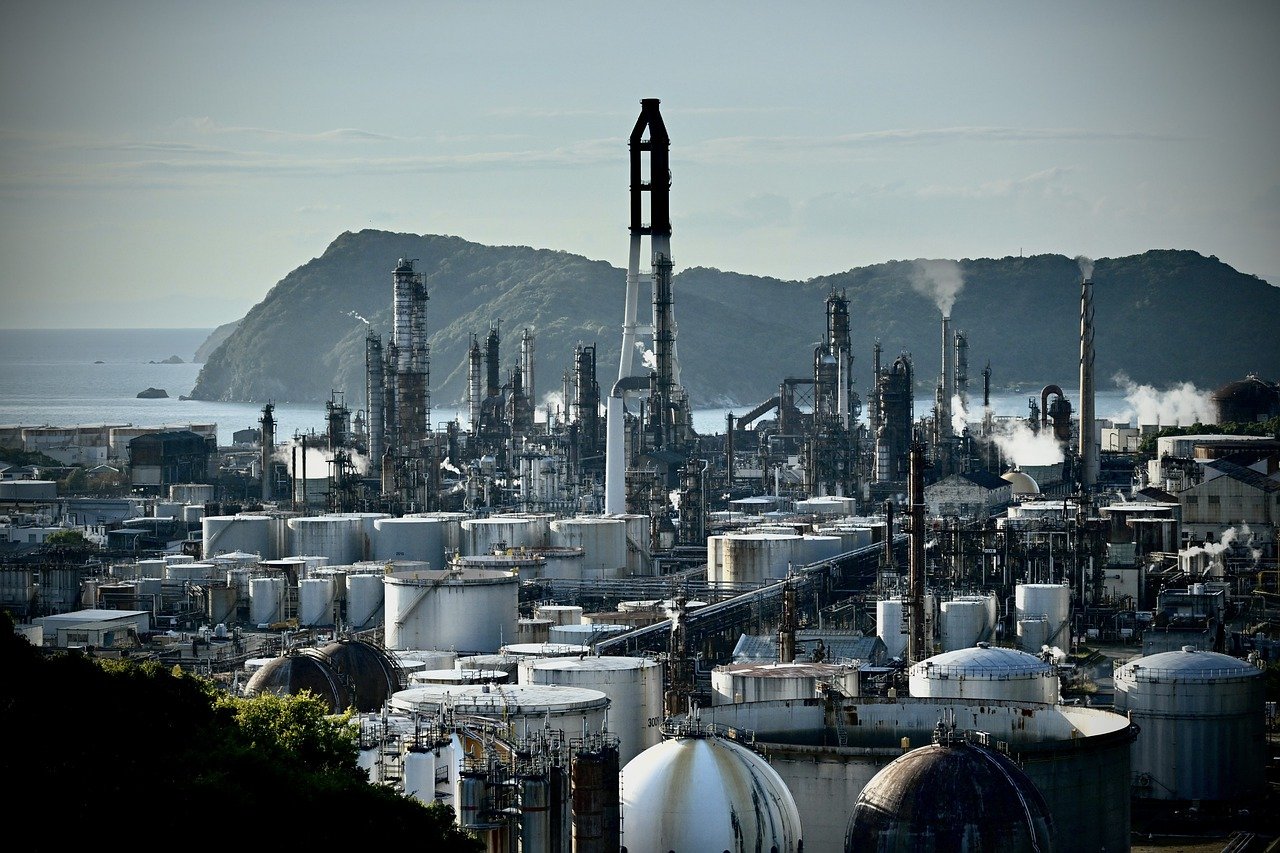
Respiratory Diseases
Imagine waking up every morning, taking a deep breath, and feeling a tightness in your chest. For millions of people around the world, this is a harsh reality caused by air pollution. Exposure to polluted air is a significant contributor to chronic respiratory diseases, which can severely impact one's quality of life. Conditions like asthma and chronic obstructive pulmonary disease (COPD) are just the tip of the iceberg when it comes to the health problems linked to poor air quality.
Airborne pollutants, such as particulate matter (PM), sulfur dioxide (SO2), and nitrogen oxides (NOx), can irritate the lungs and airways, leading to inflammation and exacerbating existing health conditions. For instance, individuals with asthma may find their symptoms worsening on days when air quality is poor, leading to increased reliance on medications and, in severe cases, hospitalization. It's like trying to breathe through a straw—each breath becomes a struggle.
Moreover, the economic burden of respiratory diseases is staggering. According to recent studies, the healthcare costs associated with treating these conditions run into billions of dollars annually. This includes direct costs, such as hospital visits and medications, as well as indirect costs like lost productivity. The reality is that air pollution doesn't just affect health; it also takes a toll on our economy.
Children are particularly susceptible to the effects of air pollution. Their lungs are still developing, making them more vulnerable to the harmful impacts of pollutants. Studies show that children exposed to high levels of air pollution are at a greater risk of developing respiratory diseases, which can carry into adulthood. This raises a critical question: how can we protect future generations from these dangers? The answer lies in understanding and addressing the root causes of air pollution.
To put things into perspective, consider the following statistics:
| Condition | Estimated Cases (Worldwide) | Annual Deaths |
|---|---|---|
| Asthma | 300 million | 400,000 |
| COPD | 251 million | 3 million |
As we can see, the numbers are alarming. The link between air pollution and respiratory diseases is undeniable, and the need for action is urgent. Community health initiatives aimed at reducing air pollution can play a crucial role in preventing these diseases. For instance, promoting the use of public transportation, encouraging the use of electric vehicles, and supporting policies that reduce emissions from industrial sources can make a significant difference.
In conclusion, the fight against respiratory diseases linked to air pollution is not just a personal battle; it's a collective one. By raising awareness and advocating for cleaner air, we can create a healthier environment for ourselves and future generations. So, the next time you take a breath, remember: it’s not just air; it’s your health and well-being at stake.
- What are the main causes of air pollution? The main causes include vehicle emissions, industrial discharges, and burning fossil fuels.
- How does air pollution affect children specifically? Children are more vulnerable due to their developing lungs, which can lead to long-term health issues.
- What can individuals do to reduce air pollution? Individuals can reduce air pollution by using public transportation, carpooling, and supporting clean energy initiatives.
- Are there any regulations in place to combat air pollution? Yes, various international and local regulations exist, but enforcement and compliance vary widely.

Children's Vulnerability
When we think about air pollution, it’s easy to imagine the smoggy skies and the choking fumes of traffic. However, the most vulnerable among us are often the youngest—the children. Their developing bodies and immune systems make them particularly susceptible to the harmful effects of polluted air. Imagine a sponge soaking up water; that’s how children's bodies absorb toxins in the air, which can lead to serious health issues.
Studies show that children exposed to high levels of air pollution are at a greater risk of developing respiratory problems, such as asthma and bronchitis. These conditions can not only affect their physical health but can also hinder their ability to engage in everyday activities, like playing outside or participating in sports. As parents, we want our children to thrive, but air pollution can put a damper on their childhood experiences.
Moreover, the implications of air pollution extend beyond immediate health concerns. Research suggests that long-term exposure can impact cognitive development. Children breathing in polluted air may face challenges in learning and memory, which can affect their academic performance. This is alarming, as education is a cornerstone for future success.
To further illustrate the various risks children face due to air pollution, consider the following:
- Respiratory Issues: Increased likelihood of asthma and other chronic respiratory diseases.
- Cognitive Impairments: Potential delays in brain development affecting learning capabilities.
- Increased Hospital Visits: More frequent healthcare needs due to pollution-related illnesses.
Protecting our children from air pollution is not just a personal responsibility; it’s a societal obligation. We must advocate for cleaner air policies, support initiatives that promote green spaces, and push for stricter regulations on emissions. After all, every child deserves a healthy environment where they can grow, learn, and play without the looming threat of air pollution. It’s time we prioritize their health and well-being, ensuring that they inherit a cleaner, safer world.
- What are the main sources of air pollution affecting children?
- Common sources include vehicle emissions, industrial discharges, and household products that release volatile organic compounds (VOCs).
- How can parents protect their children from air pollution?
- Parents can limit outdoor activities on high pollution days, use air purifiers indoors, and advocate for cleaner air policies in their communities.
- Are there specific age groups more affected by air pollution?
- Yes, children under the age of 5 are particularly vulnerable due to their developing lungs and immune systems.
- What long-term effects can air pollution have on children's health?
- Long-term exposure can lead to chronic respiratory diseases, cognitive impairments, and increased risk of cardiovascular problems later in life.

Long-term Health Effects
The long-term health effects of air pollution are alarming and can have profound implications for individuals and communities alike. When we breathe in polluted air over extended periods, our bodies are subjected to a cocktail of harmful substances that can lead to serious health complications. For instance, studies have shown that prolonged exposure to fine particulate matter (PM2.5) and other pollutants can significantly increase the risk of developing chronic conditions such as lung cancer, heart disease, and even stroke. Imagine your lungs as a sponge; over time, if that sponge is soaked in toxic substances, it becomes less effective at filtering out harmful elements, leading to a cascade of health problems.
Moreover, the effects of air pollution are not just limited to physical health. There is growing evidence that long-term exposure can also affect mental health, contributing to conditions such as anxiety and depression. The brain, much like the lungs, is sensitive to the quality of air we breathe. Pollutants can lead to inflammation and oxidative stress, which can impair cognitive function and emotional well-being. This is particularly concerning for vulnerable populations, such as the elderly and children, whose developing bodies and minds are more susceptible to these changes.
To illustrate the severity of these health risks, consider the following statistics:
| Health Condition | Increased Risk (%) |
|---|---|
| Lung Cancer | 20-30% |
| Heart Disease | 15-20% |
| Stroke | 10-15% |
While these numbers may seem daunting, awareness is the first step toward change. By understanding the potential long-term effects of air pollution, communities can advocate for cleaner air initiatives and take personal steps to protect their health. It's essential to engage in discussions about air quality and to support policies aimed at reducing emissions. After all, clean air is not just a luxury; it's a necessity for a healthy life.
- What are the most common long-term health effects of air pollution? Long-term exposure to air pollution can lead to serious health issues, including lung cancer, heart disease, and respiratory diseases.
- How does air pollution affect children's health? Children are particularly vulnerable to air pollution, facing higher risks of developing respiratory issues and cognitive impairments that can affect their development.
- Can improving air quality reverse some of these health effects? While some health effects may be irreversible, improving air quality can significantly reduce the risk of developing new health issues and may help improve existing conditions.
- What can individuals do to reduce their exposure to air pollution? Individuals can reduce their exposure by staying indoors on high pollution days, using air purifiers, and supporting clean energy initiatives.
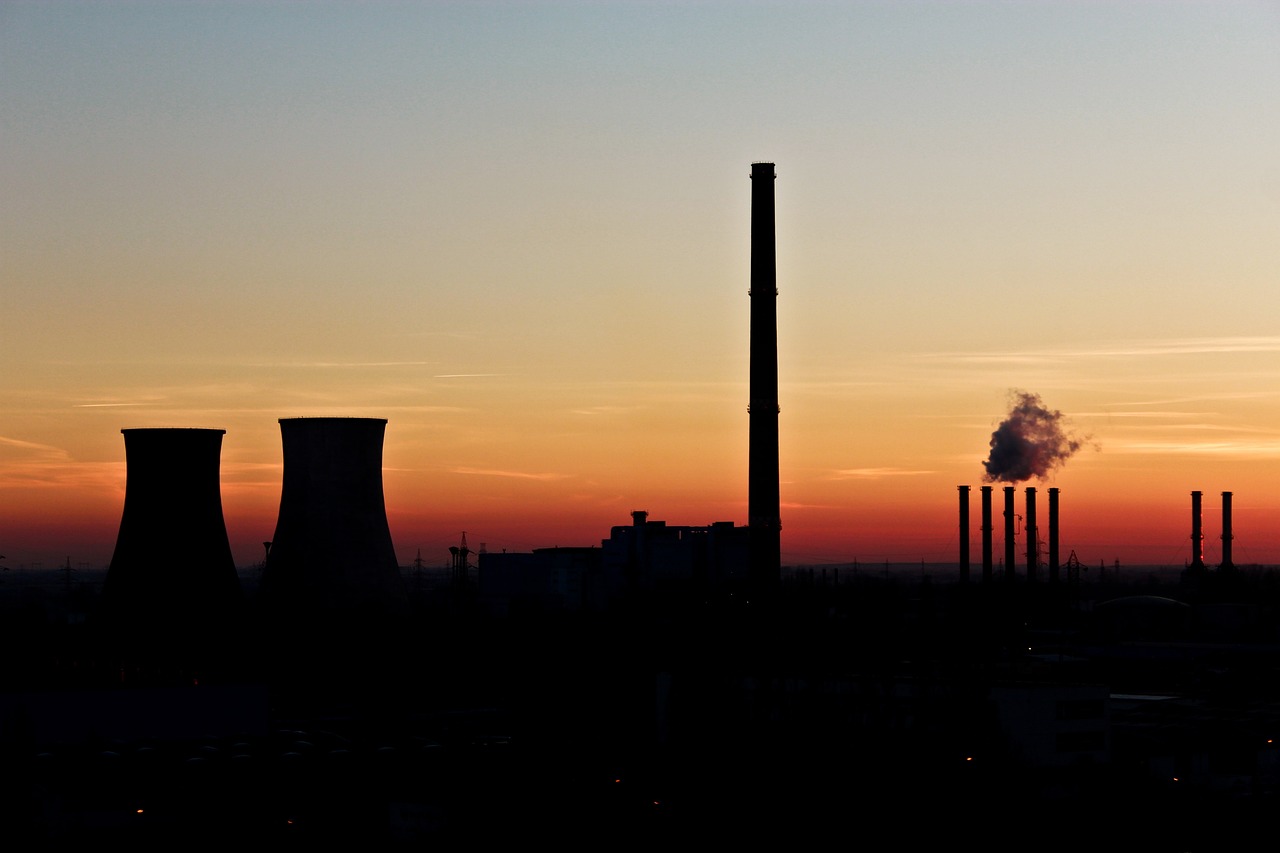
Cardiovascular Impacts
Air pollution is not just a nuisance; it’s a serious threat to our cardiovascular health. The connection between polluted air and heart-related issues is alarming. Studies have shown that exposure to air pollutants can lead to an increase in heart attacks, strokes, and other cardiovascular diseases. But how does this happen? Well, when we breathe in dirty air, harmful particles and gases enter our bloodstream, causing inflammation and stress on our heart and blood vessels. This chain reaction can lead to serious health complications, making it crucial to understand the risks associated with air pollution.
One of the primary culprits in air pollution is fine particulate matter (PM2.5), which can penetrate deep into the lungs and even enter the bloodstream. Research indicates that areas with high levels of PM2.5 have significantly higher rates of cardiovascular-related deaths. In fact, according to the World Health Organization, air pollution is estimated to cause around 4.2 million premature deaths globally each year, with a substantial portion of these deaths attributed to heart disease.
Moreover, the effects of air pollution are not limited to those already suffering from cardiovascular issues. Even healthy individuals can experience adverse effects. For instance, short-term exposure to high levels of air pollution can trigger acute cardiovascular events, such as heart attacks. This is particularly concerning for vulnerable populations, including the elderly and those with pre-existing health conditions.
To put this into perspective, let’s look at some statistics:
| Type of Impact | Statistics |
|---|---|
| Increased Heart Attack Risk | 30% higher risk in polluted areas |
| Stroke Incidence | 20% increase in stroke risk associated with high pollution levels |
| Premature Deaths | 4.2 million deaths annually linked to air pollution |
Addressing air pollution is not just an environmental issue; it is a public health crisis that demands immediate attention. By understanding the cardiovascular impacts of air pollution, we can advocate for better air quality regulations and promote healthier living environments. This includes supporting policies that aim to reduce emissions from vehicles and industries, as well as encouraging the use of public transportation and clean energy sources.
In conclusion, the link between air pollution and cardiovascular health is undeniable. It’s a wake-up call for all of us to take action, whether through personal choices or community initiatives. After all, our heart health is inextricably linked to the quality of the air we breathe. Let’s work together to ensure a healthier future for ourselves and the generations to come.
- What are the main sources of air pollution? Common sources include vehicle emissions, industrial discharges, and burning fossil fuels.
- How can I protect myself from air pollution? Staying indoors on high pollution days, using air purifiers, and advocating for cleaner air policies can help.
- Is air pollution reversible? While some effects can be mitigated, reducing pollution levels is essential for long-term recovery.
- What are the signs of cardiovascular problems due to air pollution? Symptoms may include chest pain, shortness of breath, and fatigue. Consult a healthcare provider if you experience these.
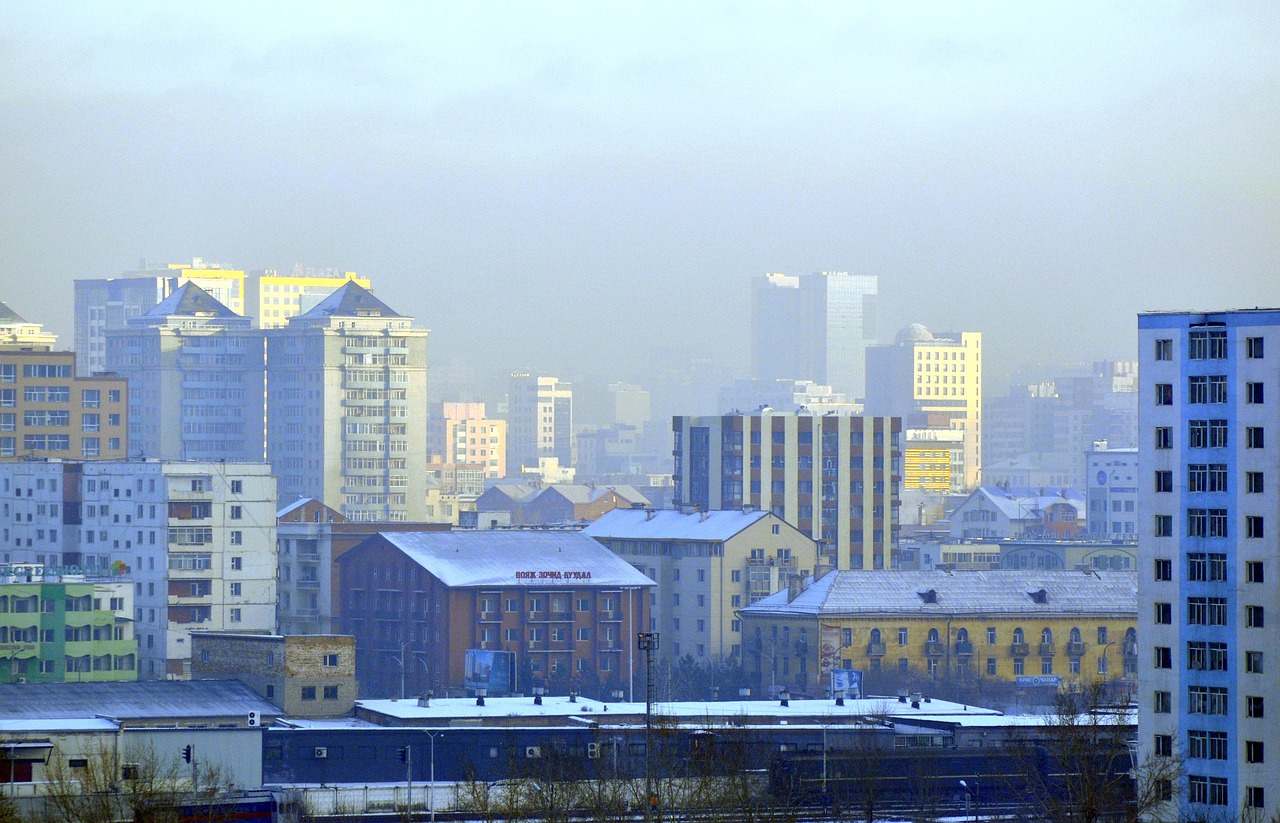
Contribution to Climate Change
Air pollution is not just an environmental nuisance; it plays a significant role in the ever-pressing issue of climate change. When we talk about air pollution, we often think of smog and haze, but the real danger lies in the invisible gases and particulate matter that are released into the atmosphere. These pollutants, such as carbon dioxide (CO2), methane (CH4), and nitrous oxide (N2O), are not only harmful to our lungs but also act as potent greenhouse gases that trap heat in the atmosphere, leading to a rise in global temperatures.
To illustrate the impact of these emissions, consider the following table that highlights the major greenhouse gases and their sources:
| Greenhouse Gas | Source |
|---|---|
| Carbon Dioxide (CO2) | Burning fossil fuels, deforestation |
| Methane (CH4) | Agricultural practices, landfills, natural gas production |
| Nitrous Oxide (N2O) | Fertilizer application, industrial processes |
These gases contribute to the greenhouse effect, which is the process by which the Earth's atmosphere traps some of the energy from the sun, preventing it from escaping back into space. This trapped energy leads to a gradual increase in the Earth's average temperature, commonly referred to as global warming. As the planet warms, we witness a cascade of environmental changes, including melting ice caps, rising sea levels, and more frequent extreme weather events.
Moreover, air pollution doesn’t just affect the climate; it also disrupts weather patterns. For instance, the presence of particulate matter in the air can alter cloud formation and precipitation, leading to unpredictable weather. This can result in severe consequences such as droughts in some regions and flooding in others. Understanding these shifts is crucial for developing effective disaster preparedness strategies. It’s like trying to predict the mood of a friend who has just had a bad day—you need to know the underlying issues to anticipate their reactions.
In addition to the direct effects on climate, air pollution also exacerbates existing environmental issues. For example, areas with high levels of air pollution often experience acid rain, which can damage forests, lakes, and soil. This not only affects plant and animal life but also has a ripple effect on human activities like agriculture and fishing. It’s a tangled web where one issue leads to another, creating a cycle of environmental degradation.
In conclusion, the contribution of air pollution to climate change is a complex interplay of various factors that requires urgent attention. By reducing emissions of greenhouse gases and improving air quality, we can take significant steps toward mitigating climate change and protecting our planet for future generations. The fight against air pollution is not just about cleaner air; it’s about ensuring a stable climate and a sustainable future.
- What are the main causes of air pollution? Air pollution is primarily caused by industrial emissions, vehicle exhaust, and agricultural activities.
- How does air pollution affect climate change? Air pollution releases greenhouse gases that trap heat in the atmosphere, contributing to global warming.
- What can be done to reduce air pollution? Implementing stricter regulations, promoting renewable energy sources, and increasing public transportation can help reduce air pollution.
- Is air pollution harmful to human health? Yes, air pollution can lead to serious health issues, including respiratory diseases and cardiovascular problems.
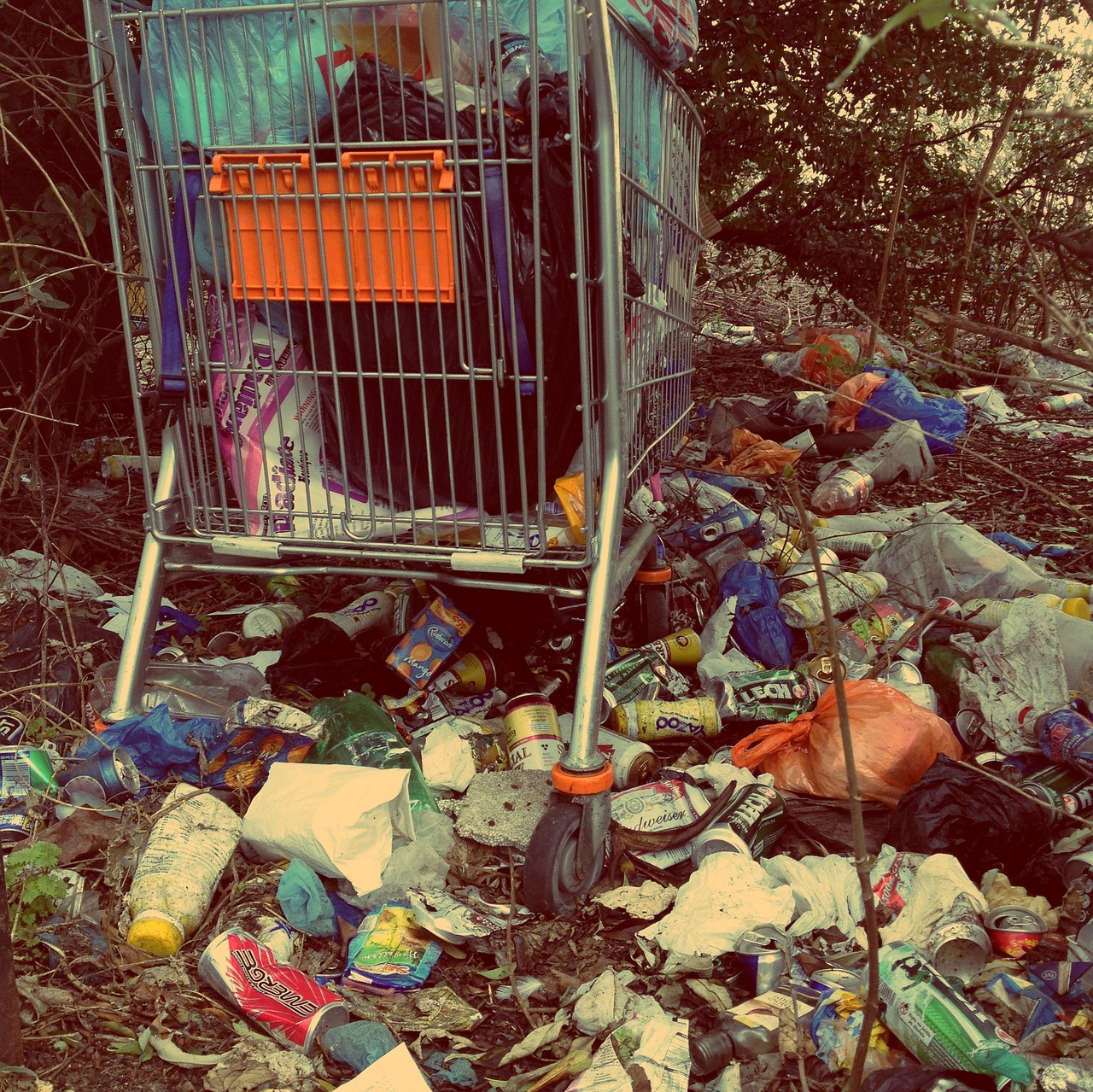
Greenhouse Gas Emissions
When we talk about , we're diving into one of the most pressing environmental issues of our time. These gases, including carbon dioxide (CO2), methane (CH4), and nitrous oxide (N2O), are released into the atmosphere through various human activities such as burning fossil fuels, industrial processes, and deforestation. It's like a double-edged sword: while we rely on these activities for energy and economic growth, they come at a significant cost to our planet's health.
To put things into perspective, the accumulation of greenhouse gases is a major driver of global warming. The more we emit, the thicker the blanket around our Earth becomes, trapping heat and leading to rising temperatures. This phenomenon not only affects our climate but also disrupts ecosystems and weather patterns, creating a ripple effect that can be felt worldwide. For example, the increase in CO2 levels is primarily attributed to the combustion of fossil fuels, which is essential for powering our cars, factories, and homes. However, this convenience comes with a hefty price tag: the degradation of our atmosphere and the acceleration of climate change.
Here's a quick look at the sources of greenhouse gas emissions:
| Greenhouse Gas | Main Sources | Impact on Climate |
|---|---|---|
| Carbon Dioxide (CO2) | Burning of fossil fuels, deforestation | Major contributor to global warming |
| Methane (CH4) | Agriculture (especially livestock), landfills | More potent than CO2 in the short term |
| Nitrous Oxide (N2O) | Agricultural activities, industrial processes | Significant greenhouse gas with long-term effects |
Addressing greenhouse gas emissions is crucial for a sustainable future. Each one of us can play a part in reducing our carbon footprint. Simple actions like using public transportation, conserving energy at home, and supporting renewable energy initiatives can collectively make a significant difference. It’s like planting seeds of change; with each small effort, we nurture a healthier planet for future generations.
In conclusion, understanding greenhouse gas emissions is essential for creating effective strategies to combat climate change. By recognizing the sources and impacts of these emissions, we can work towards solutions that not only protect our environment but also promote a healthier lifestyle. The challenge is daunting, but together, we can pave the way for a cleaner, greener future.
- What are the main greenhouse gases? The primary greenhouse gases include carbon dioxide (CO2), methane (CH4), and nitrous oxide (N2O).
- How do greenhouse gases affect climate change? They trap heat in the atmosphere, leading to global warming and disrupting weather patterns.
- What can individuals do to reduce their emissions? Individuals can reduce their emissions by using public transportation, conserving energy, and supporting renewable energy sources.
- Why is it important to address greenhouse gas emissions? Reducing these emissions is crucial for mitigating climate change and ensuring a sustainable future for our planet.
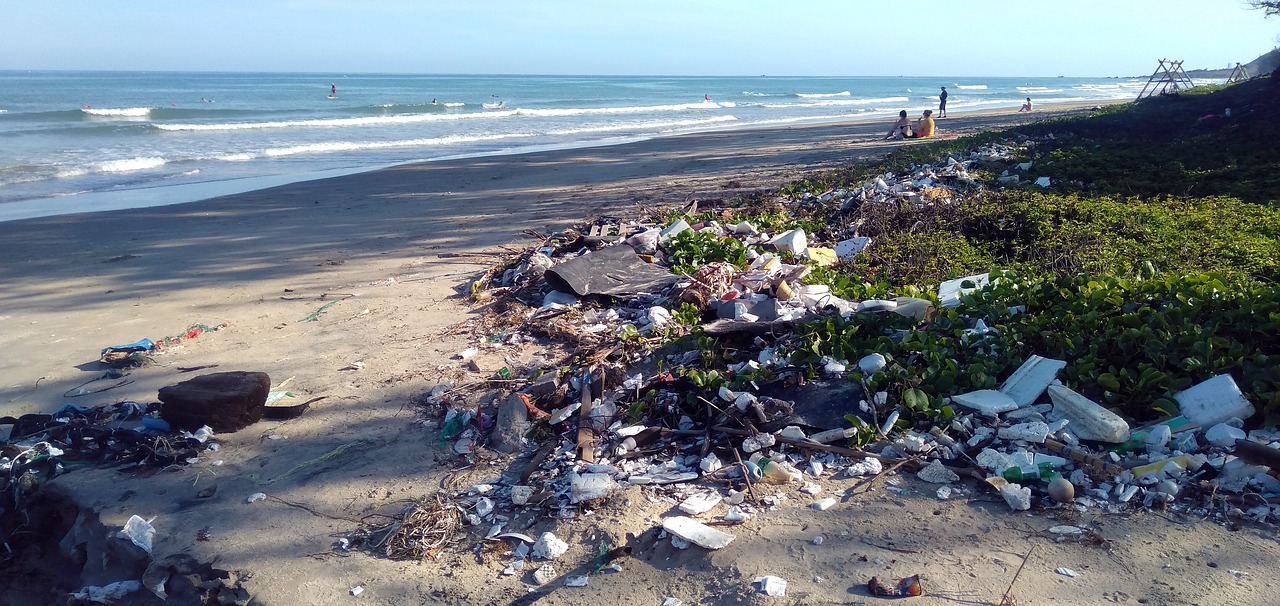
Effects on Weather Patterns
Air pollution doesn't just cloud the skies; it also has profound effects on our weather patterns. Imagine the atmosphere as a finely tuned orchestra, where every instrument plays its part in creating a harmonious melody of climate. When air pollutants, such as sulfur dioxide and nitrogen oxides, are introduced into this delicate system, they can throw the entire composition out of tune. These pollutants can lead to the formation of acid rain, which not only damages crops and forests but also disrupts aquatic ecosystems. The consequences ripple through the environment, affecting everything from soil quality to the health of our waterways.
Moreover, air pollution can intensify extreme weather events. For instance, cities with high levels of smog often experience more severe heat waves. This phenomenon occurs because pollutants trap heat in the atmosphere, leading to higher temperatures. According to recent studies, urban areas with significant air pollution can be up to 5 degrees Fahrenheit warmer than their rural counterparts. This temperature discrepancy can create a feedback loop, where increased heat leads to higher energy consumption, further exacerbating pollution levels.
But that's not all; air pollution can also influence precipitation patterns. Particulate matter in the atmosphere can act as nuclei for cloud formation, affecting how and when rain falls. This can lead to unpredictable weather, with some regions experiencing heavier rainfall while others suffer from prolonged droughts. The table below illustrates the relationship between air pollution levels and changes in precipitation patterns:
| Pollutant Type | Effect on Precipitation | Example Regions |
|---|---|---|
| Sulfur Dioxide | Increases acid rain | Eastern United States |
| Nitrogen Oxides | Alters rainfall intensity | California |
| Particulate Matter | Changes cloud formation | Asia (e.g., China, India) |
In summary, air pollution's effects on weather patterns are multifaceted and complex. Understanding these impacts is essential for developing strategies to mitigate climate change and prepare for extreme weather events. Just like a ripple effect in a pond, the consequences of air pollution extend far beyond immediate surroundings, influencing global climate systems and ultimately affecting all life on Earth.
- How does air pollution affect local weather? Air pollution can lead to increased temperatures and altered precipitation patterns, causing unpredictable weather.
- What pollutants are most harmful to weather patterns? Sulfur dioxide, nitrogen oxides, and particulate matter are significant contributors to changes in weather.
- Can reducing air pollution help stabilize weather patterns? Yes, reducing air pollution can mitigate its effects on weather and contribute to a more stable climate.
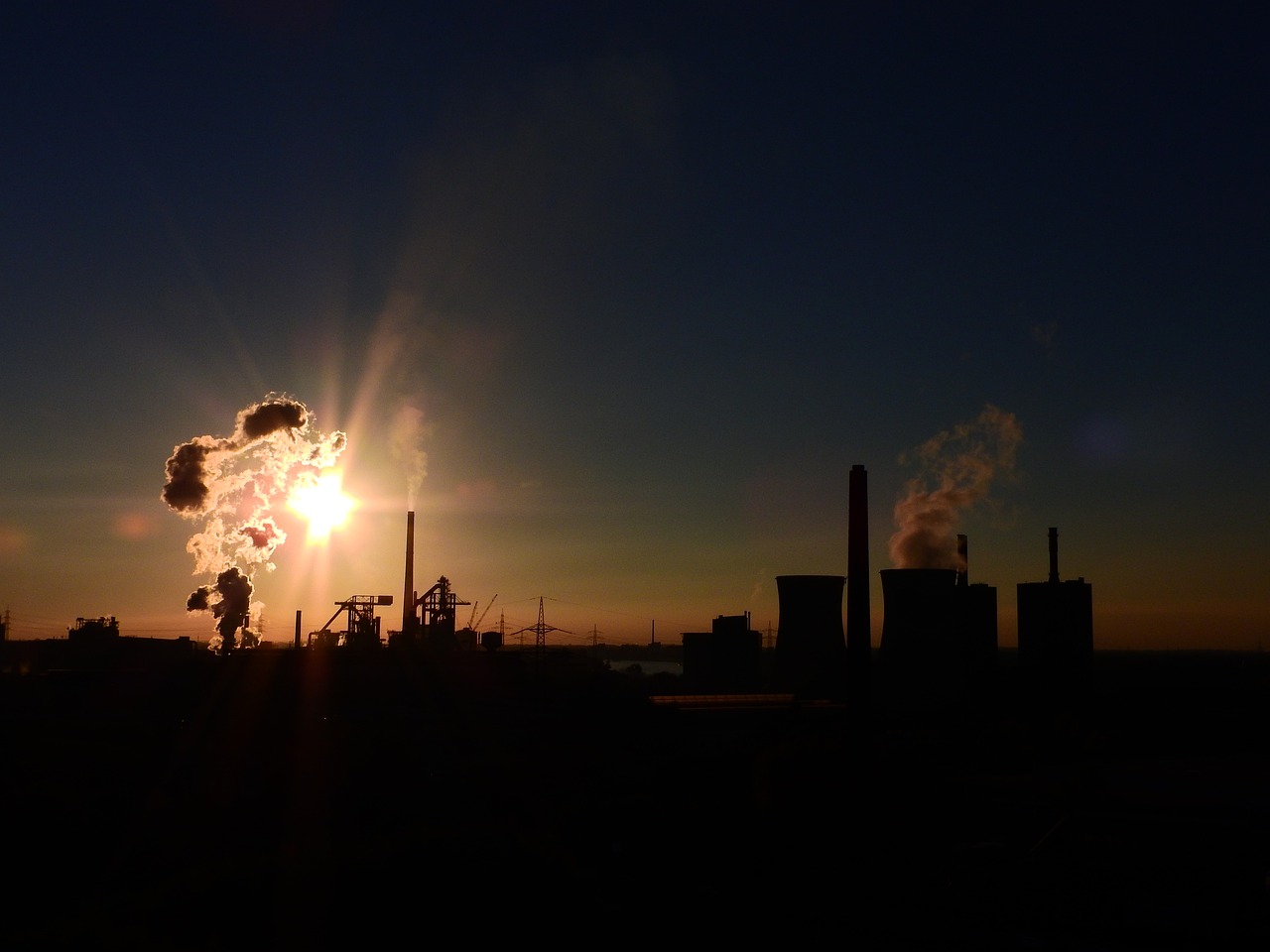
Regulatory Measures
To tackle the pressing issue of air pollution, effective regulatory measures are paramount. Governments worldwide are recognizing the need to implement stringent regulations that not only address current pollution levels but also prevent future degradation of air quality. These regulations can take various forms, including emissions standards, monitoring systems, and public awareness campaigns. For instance, many countries have established limits on the amount of harmful pollutants that can be emitted from vehicles and industrial facilities. This is crucial because, without these standards, industries might prioritize profit over public health.
One significant aspect of regulatory measures is the role of international agreements. Global cooperation through treaties and accords is essential for addressing air pollution that crosses national borders. Agreements such as the Paris Agreement aim to unite countries in their efforts to reduce greenhouse gas emissions and improve air quality. These initiatives often set ambitious targets for emission reductions, and countries are held accountable for their progress. The success of these agreements depends on the commitment of each nation to adhere to the guidelines and invest in sustainable practices.
On a more localized level, local policies are equally critical. City and state governments can implement specific measures tailored to their unique challenges. For example, promoting the use of clean energy sources, such as solar and wind power, can significantly reduce reliance on fossil fuels, which are major contributors to air pollution. Additionally, enhancing public transportation systems can encourage people to use alternative modes of travel, thus reducing vehicle emissions. Local governments can also initiate community programs aimed at raising awareness about the importance of air quality and how individuals can contribute to improvement.
Moreover, monitoring and reporting systems are vital components of effective air quality management. These systems provide real-time data on pollution levels, allowing authorities to respond quickly to hazardous conditions. For instance, cities can issue health advisories when air quality deteriorates, informing residents to limit outdoor activities. By maintaining transparency and providing accurate information, regulatory bodies can foster a sense of responsibility among citizens and businesses alike.
In summary, a comprehensive approach to regulatory measures is essential for combating air pollution. It requires collaboration at both international and local levels, alongside the implementation of effective monitoring systems. By prioritizing air quality through these measures, we can protect public health and the environment for future generations.
- What are the main regulatory measures to combat air pollution? Regulatory measures include emissions standards, international agreements, and local policies aimed at reducing pollutants.
- How do international agreements help in reducing air pollution? They promote global cooperation and set binding targets for countries to reduce their emissions, ensuring collective action against air pollution.
- What role do local governments play in air quality management? Local governments can implement policies tailored to their specific needs, such as promoting clean energy and improving public transportation.
- Why is monitoring air quality important? Monitoring provides real-time data that helps authorities respond quickly to pollution levels and informs the public about health risks.

International Agreements
International agreements play a crucial role in combating air pollution on a global scale. These accords bring together countries to collectively address the challenges posed by air quality deterioration, recognizing that pollution knows no borders. One of the most significant agreements is the Paris Agreement, established in 2015, which aims to limit global warming and reduce greenhouse gas emissions. By committing to national targets, countries can work together to lower air pollution levels and mitigate climate change effects.
Another important framework is the Convention on Long-Range Transboundary Air Pollution (CLRTAP), which focuses on reducing air pollution that travels across borders. This agreement has led to various protocols, such as the Gothenburg Protocol, which sets legally binding limits on emissions for several pollutants, including sulfur dioxide and nitrogen oxides. Through these agreements, nations can share best practices, technology, and funding to tackle air pollution more effectively.
However, while these international agreements are essential, their success largely depends on the commitment of individual countries to implement and adhere to the agreed-upon measures. This can often be a challenge, as political and economic factors may hinder progress. For instance, developing nations may struggle to meet stringent emission targets due to economic constraints. Therefore, it is vital that developed countries provide financial and technical support to help these nations transition to cleaner technologies.
In conclusion, international agreements are a foundational element in the fight against air pollution. They promote collaboration, set standards, and encourage countries to take action. But to truly make a difference, these agreements must be backed by genuine commitment and action at the national level. Only then can we hope to see a significant reduction in air pollution and its associated impacts on health and the environment.
- What are the main goals of international agreements on air pollution?
International agreements aim to reduce air pollution levels, limit greenhouse gas emissions, and promote collaboration among nations to address environmental issues. - How do international agreements affect local policies?
International agreements often influence local policies by providing frameworks and guidelines that governments can adopt to improve air quality and protect public health. - Can developing countries participate in international agreements?
Yes, developing countries can participate in international agreements, and it is essential for developed nations to support them in meeting their commitments.
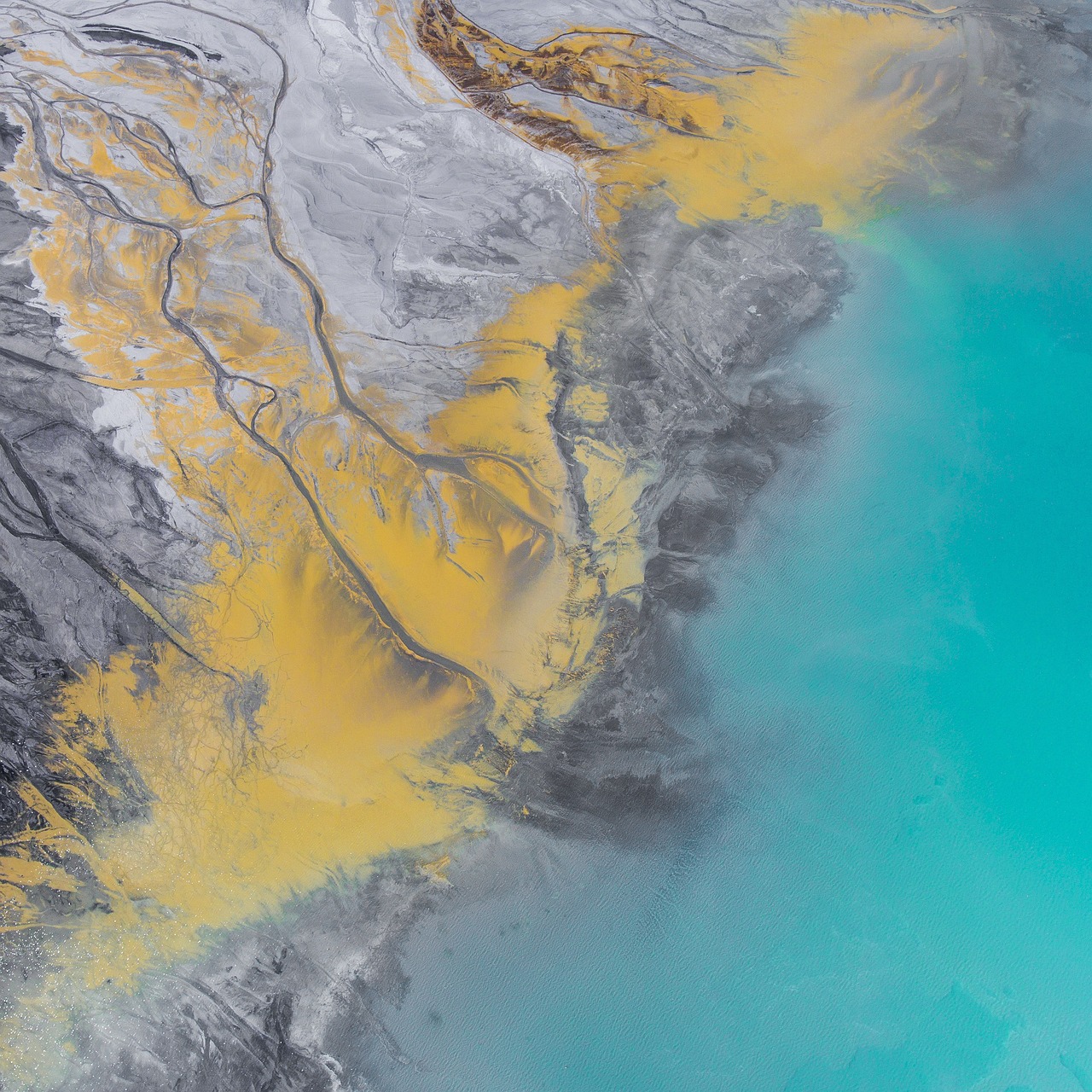
Local Policies
Local policies play a crucial role in combating air pollution and safeguarding the environment. While national and international regulations set the stage, it's often at the local level where impactful changes are made. Local governments have the unique opportunity to tailor their strategies to the specific needs of their communities. For instance, cities can implement measures that promote clean energy sources and enhance public transportation systems, making a significant difference in air quality.
One effective approach is the promotion of public transportation. By investing in reliable and efficient transit systems, cities can encourage residents to opt for buses or trains instead of personal vehicles, which are major contributors to air pollution. Additionally, local policies can include incentives for using electric vehicles, such as tax breaks or reduced parking fees. Such initiatives not only reduce the number of traditional gas-powered cars on the road but also promote a culture of sustainability.
Furthermore, local governments can play a pivotal role in regulating industrial emissions. Establishing stricter guidelines for factories and encouraging the adoption of green technologies can significantly reduce harmful emissions. For example, cities can require industries to install air filtration systems or switch to cleaner production methods. This not only helps in improving air quality but also sets a precedent for responsible environmental stewardship.
Another important aspect is community engagement. Local policies that involve residents in decision-making processes tend to be more effective. By organizing community forums and educational programs, local authorities can raise awareness about air pollution and its effects. This participatory approach empowers citizens to take action, whether it's advocating for stricter regulations or adopting greener lifestyles.
To illustrate the impact of local policies, consider the following table that summarizes successful initiatives from various cities:
| City | Policy | Outcome |
|---|---|---|
| Los Angeles | Expanded public transit | Reduced car usage by 15% |
| New York City | Congestion pricing | Lowered emissions by 10% |
| San Francisco | Incentives for electric vehicles | Increased EV usage by 20% |
In conclusion, local policies are not just a piece of the puzzle; they are the building blocks for a cleaner, healthier environment. By focusing on public transportation, industrial regulations, and community engagement, local governments can lead the charge against air pollution, ultimately contributing to a better quality of life for all residents.
- What are local policies? Local policies are regulations and initiatives implemented by local governments to address specific community needs, including environmental issues like air pollution.
- How can local policies reduce air pollution? By promoting public transportation, regulating industrial emissions, and encouraging community engagement, local policies can significantly improve air quality.
- Why is community engagement important? Community engagement fosters awareness and empowers residents to participate in decision-making, leading to more effective and accepted policies.
- What role do local governments play in environmental issues? Local governments are responsible for implementing and enforcing policies that can directly impact environmental health within their communities.
Frequently Asked Questions
- What are the main causes of air pollution?
Air pollution primarily arises from human activities such as industrial emissions, vehicle exhaust, and burning fossil fuels. Natural sources like wildfires and volcanic eruptions also contribute, but the bulk of air pollution is man-made.
- How does air pollution affect human health?
Air pollution can lead to serious health issues, including respiratory diseases like asthma and COPD, cardiovascular problems, and even premature death. Long-term exposure can increase the risk of developing chronic conditions such as lung cancer and heart disease.
- Are children more affected by air pollution than adults?
Yes, children are particularly vulnerable to the effects of air pollution. Their developing lungs and immune systems make them more susceptible to respiratory issues and cognitive impairments, highlighting the need for protective measures.
- What impact does air pollution have on ecosystems?
Air pollution disrupts ecosystems by degrading soil and water quality, which can harm plant and animal life. This disruption can lead to biodiversity loss and negatively impact overall environmental health.
- How does air pollution contribute to climate change?
Air pollution contributes to climate change by releasing greenhouse gases and particulate matter into the atmosphere. These pollutants trap heat, leading to global warming and altering weather patterns.
- What are greenhouse gases, and why are they important?
Greenhouse gases, such as carbon dioxide and methane, are critical because they trap heat in the atmosphere. Reducing their emissions is essential for mitigating climate change and protecting the environment.
- What regulatory measures are in place to combat air pollution?
Various regulations exist at both international and local levels to address air pollution. International agreements aim to set emission standards, while local policies focus on promoting clean energy and enhancing public transportation.
- How can individuals help reduce air pollution?
Individuals can help reduce air pollution by using public transportation, carpooling, reducing energy consumption, and supporting clean energy initiatives. Small changes in daily habits can lead to significant improvements in air quality.



















